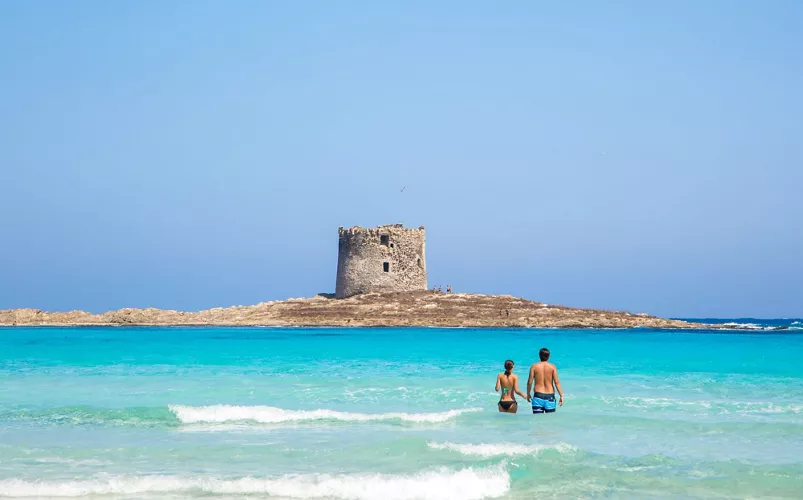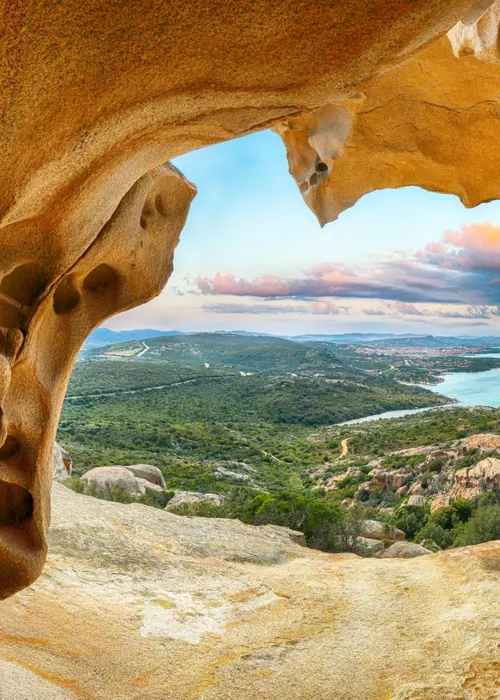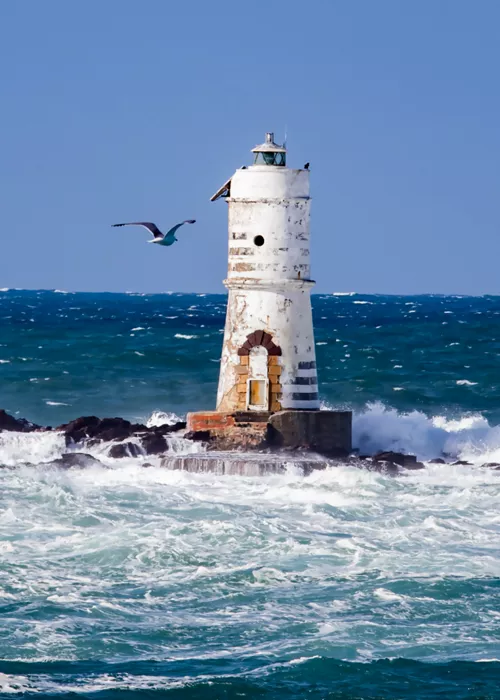Between Stintino and La Pelosa, the Caribbean of Sardinia
Better than being in the Caribbean is being in Italy. This is Stintino and La Pelosa in Sardinia, where the sea is a spectacle of nature.
The most famous beach of Stintino is located on the north-western tip of Sardinia. La Pelosa has water with colours ranging from azure to turquoise, a dazzling expanse of fine white beach and dunes dotted with Mediterranean scrub.
But don't stop there, the surrounding area has even more hidden corners that are just as beautiful and less crowded.
La Pelosa means where the sea shimmers and has a thousand shades.
They call it sa pelosa here, due to the abundant presence of seaweed in this part of the coastline (pelosa means hairy). If you find this annoying, just know that you won't even remember it as soon as you see this beach’s iridescent sea of a thousand shades. The water’s always calm because it’s protected from the tides and the north-west wind by a natural barrier created by the stacks of Capo Falcone, Piana Island and the rocks of Asinara.
The Sardinians call the small gulf overlooked by La Pelosa beach inland sea as opposed to the open sea of the westernmost coast exposed to the wind. The seabed here is very shallow and even small children can have fun in complete safety. To preserve the beach’s beauty in the summer months, access is limited and by reservation only. It’s still best to arrive early to avoid the crowds.
La Pelosetta and its islets
The smaller Pelosetta is just as beautiful as La Pelosa. It’s just in front of the islet on which Pelosa Tower stands, a ten-metre-high Aragonese construction that can be reached on foot by walking along the seabed populated by hundreds of small fish. Just beyond is Piana Island, with the ruins of another Spanish tower. In the past the island was used for seasonal migration, transporting cattle on boats.
Le Saline and other nearby beaches
The beaches of Stintino, on the east coast, are equally heavenly and almost always much less crowded. The most beautiful is Le Saline, a beach of white pebbles shimmering in the sun. It got its name (saline means “salt pans”) because of its proximity to the salt pans built by the monks of Santa Maria di Tergu in the 13th century.
Tonnare beach is also near here. The former tuna fishery is now a beach resort. Those seeking more tranquillity than the crowded beaches will love Cala Lupo and Punta Negra. The very long Ezzi Mannu beach is also not to be missed.
If you like wilder beaches and contact with unspoilt nature, the ideal spot is the beach of Pilo, further south. Pilo pond is just behind the shoreline, where flamingos, herons, roseate gulls and kingfishers can be spotted.
The wildest cliffs
The coastline facing the Sardinian Sea beyond Capo Falcone is even wilder. Instead of stretches of sand, rocks are interspersed with coves here, some of which can only be reached by boat, such as Biggiu Marinu. Others can also be reached by land via paths on the promontory. Make sure to explore Cala Coscia di Donna and Cala Vapore, which lies in front of the wreck of a sunken steamer only six metres from the shore.
A stroll in Stintino
Established as a fishing village at the end of the 19th century when the inhabitants of Asinara were evicted to make way for the penal colony, it still features low houses overlooking two small marinas.
In the past, life in the village was linked to tuna processing, and there is now a museum in the old tuna fishery that was active until the 1970s that recounts the tradition. In the town's two harbours, wooden gozzi, or fishing boats, with lateen sails are moored, a symbol of Stintino. A regatta is also held here at the end of August.
Don't miss a trip to nearby Porto Torres, the largest historical centre in the area. Full of clubs and very busy, it has always been an important commercial port and is ideal if you’re looking for a bit of nightlife, beautiful sea and Sardinian tradition. Make sure not to miss the Aragonese Tower.
Try the lobster and potato soup
After a day of exploring the beaches, dinner is more than deserved. Featuring fish, of course. Stop at one of Stintino's small restaurants to try octopus in garlic sauce or Stintinese-style lobster and potato soup, spaghetti with urchins and sardines in tomato sauce.
Feeling brave? Taste u belu, which is tuna tripe. Leave room for dessert, the typical Stintino dessert is tumbarella.
































